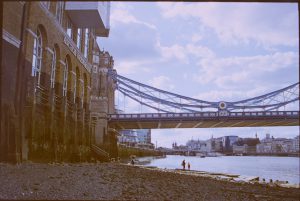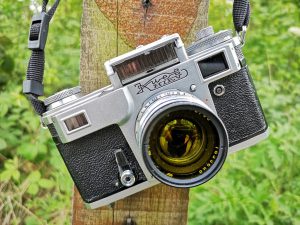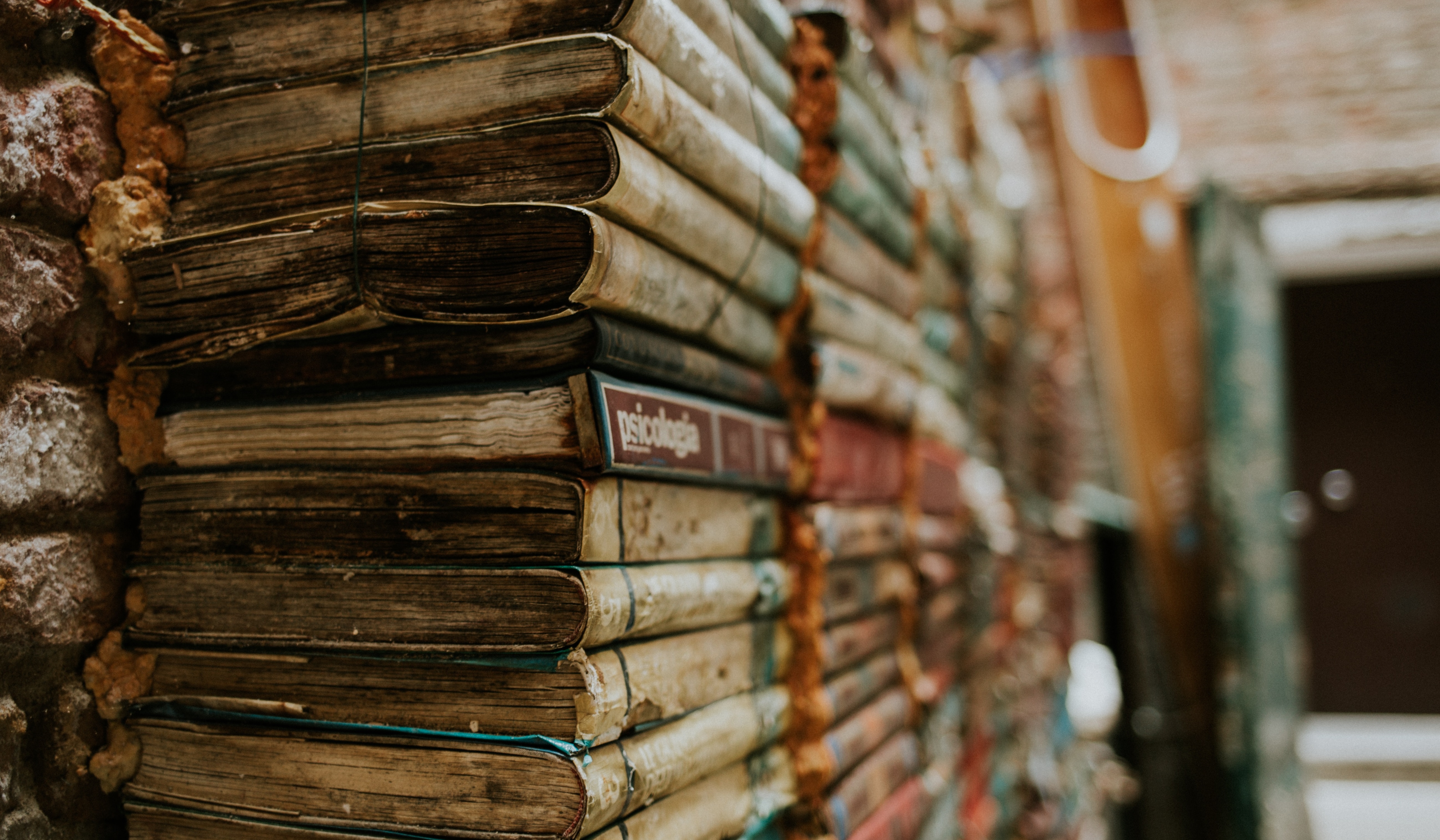This week’s featured post isn’t a post, but rather Episode 118 of the Classic Lenses Podcast. This episode is devoted entirely to the fire that engulfed Central Camera in Chicago as a result of civil unrest surrounding the murder of George Floyd which has topped the headlines every day for the past two weeks.
By now, you’ve probably seen countless news articles and social media posts talking about what happened, but what makes this podcast unique is that we get to hear Central Camera employee Johnny Sisson share some behind the scenes information of what happened and more insight to owner Don Flesch’s interview on local news that everyone has already seen. Having worked for Central Camera for over four years, he has a level of experience and first hand knowledge that no one else has.
Interestingly, one of the podcast’s other hosts, Perry Ge, lives in Hong Kong and has a great deal of experience living through protests and the violence surrounding that country’s struggles with China. You don’t often get two people together in the same recording that have seen what these two guys have seen.
It is very difficult to talk about what caused the Central Camera fire without getting into politics and strong opinions, but Johnny, Simon, and Perry do a really good job of keeping it to a minimum and just discussing facts.
Here are more great posts from some of my favorite sites:
There are quite a few “Intro to Shooting Film” type posts out there, and this week my friend Alex Luyckx gives us his thoughts on getting into film. Unlike many other of these kinds of articles out there, Alex approaches this from the perspective of jumping into film with what you already have. Do you have a digital Nikon, Sony, or Leica M system? If so, then venturing into classic film cameras that can use those same lenses is an excellent way to start, as in most cases you can use many digital lenses on older film bodies and vice versa. It’s a short read, but I think that these kinds of articles are always good to continue to promote interest in our hobby.
Continuing with the theme of encouraging people to try film, this week Aidan Bell from Casual Photophile declares the Canon AE-1 Program as the perfect beginner’s film camera. He’s definitely not wrong as both the AE-1 Program and the earlier AE-1 were two of the most popular cameras ever made, selling millions of copies between 1976 and 1987. You might remember that last year I put the Canon AE-1 Program in a head to head battle with the Pentax K1000 in a “Student Camera Showdown” where I declared the K1000 to be my pick, but that doesn’t mean the AE-1 Program isn’t still a great choice for the beginner as well.
 Usually when you hear the team “cross processing”, it involves people developing color slide film in C41 chemicals to give a negative image with some strange colors. Less often though, people take color negative film and turn it into slide film, and that’s what Eric Toribio from Kosmo Foto did with Kodak Color Plus 200. As you might imagine, the colors came out a little strange, but the images are still very usable and have a really cool look to them. My favorite line from this article is when Toribio says, “I really enjoy developing. It’s a lot of fun to pretend to be a scientist.” I like pretending to be a scientist too!
Usually when you hear the team “cross processing”, it involves people developing color slide film in C41 chemicals to give a negative image with some strange colors. Less often though, people take color negative film and turn it into slide film, and that’s what Eric Toribio from Kosmo Foto did with Kodak Color Plus 200. As you might imagine, the colors came out a little strange, but the images are still very usable and have a really cool look to them. My favorite line from this article is when Toribio says, “I really enjoy developing. It’s a lot of fun to pretend to be a scientist.” I like pretending to be a scientist too!
In another of her reviews of cameras that don’t get much love these days, Aly’s Vintage Camera Alley takes a look at the twin lens box Anscoflex camera. These simple “pseudo TLRs” as they’re sometimes called today were very common in the mid 20th century as they were cheap to make, easy to use, and with a larger 6cm x 6cm exposed image size, were capable of decent image quality. Of course, if you want to buy and shoot your own Anscoflex, you’ll have to find a way to source some 620 film or learn how to respool from regular 120 film.
The Konica Auto S3 was an excellent rangefinder from the very last days of when companies still made excellent rangefinders. As such, these cameras have developed a bit of a cult status making them a bit expensive to find here in the US. But at least I can find them. What about someone living in South Africa? This week on 35mmc, Hendrik Teron tells us his story of locating such a camera in good condition, for not a lot of money, in South Africa. Most anyone reading my blog would probably already know the Auto S3 is a pretty good camera, but this article is interesting to hear what Teron had to go through to get one of his own.
It seems that the COVID-19 quarantine has afforded Peggy Marsh from Camera Go Camera some extra time with her camera collection as her review output has increased recently. This time it’s for the very underrated Fujica ST-605, a relatively simple M42 SLR from the 1970s. There were many great and simple screw mount SLRs made during the time the ST-605 would have been sold, but of course their greatest selling feature was the huge array of M42 (sometimes called Universal Mount) lenses both from Japanese and German companies. With an ST605, you have a tremendous selection to choose from and they’re nearly all good. If you are looking for an inexpensive and easy to use camera that’s compatible with your screw mount lenses, you could do a lot worse than the Fujica ST-605.
My favorite black and white film is Kodak’s Panatomic-X, a fine grain, slow speed film that was in use for the greater part of the 20th century. Unfortunately, Pan-X is no longer made and unused supplies of the film are disappearing fast. In an effort to recreate what I love about Pan-X, I am always on the search for something comparable, so when I saw Alex Luyckx’s highly detailed review of a cinema film called Kodak 2238 Panchromatic Separation Film, I was intrigued. Kodak 2238 is actually rated at ASA 6, as opposed to Pan-X which was rated at 25 or 32 depending on when it was made, but Alex confidently lists the film as having a latitude which covers that speed. The film can be bought new, hand rolled from 2000′ spools at the Film Photography Project Store for $10 each.
I’ve reviewed cameras on this site of nearly every common film format of the 20th century. Sure, there were some obscure early roll film formats like type 107, 115, and 122 that I haven’t yet covered, but other than size, the experience wouldn’t be much different than 120 or 116. Yet, there’s one, pretty modern film type that I haven’t yet touched. The Advanced Photo System, or APS film, which Kodak introduced in 1996 in the hope of replacing 35mm. This week, Theo from photothinking.com takes a look at the incredibly compact and capable Canon Elph 2 that he picked up in a charity shop for $5. Theo gives a bit of history on the format, some technical specs, thoughts on it’s use and some really terrific sample images. Dammit Theo! I don’t need more film formats to seek out!
The Pentacon Six was a medium format SLR camera that shoots 6×6 images on 120 film, and was made in East Germany at a time when quality control of East German cameras wasn’t exactly inspiring. Many of these models had issues when they were new and when found today, often require some level of repair to get them working. Despite this poor reputation, when working, the Pentacon Six is a much more affordable option for a medium format SLR than those made by other companies, so there’s still a level of interest in them. This week, Al Kattintotta from EMULSIVE tries to fix the bad reputation of this camera, showing how good of a job they can do when working. I must admit, the idea of a 6×6 SLR is appealing to me, and like many, find them to be unaffordable, but after reading this article, one might find it’s way into my review queue sooner than later!
Now that the reputation of the Pentacon Six has been repaired, what about the Soviet version of the Pentacon Six, the Kiev 60? If you thought an East German 6×6 SLR was a risk, then you’ll really love the Kiev-60. Described as a tank in every possible sense of the word, the Kiev-60 is known for internal light flaring, frame spacing, and quality control issues, yet like the Pentacon Six, if you get one in good working condition, they’re a tremendous value compared to other 6×6 SLRs. If the thought of a half century old Russian camera that’s based off an unreliable East German camera is too much of a risk, what about an updated Kiev-60 that you can still buy new from Ukraine today? If this sounds confusing, don’t worry as Conor Corkrum from Kosmo Foto gives you the lowdown on both the Kiev-60 and a brand new Arax-60 MLU.
 Since we’re talking about Kievs, how about a review of one of my all time favorites, the Zeiss-Ikon Contax based Kiev-4. Peggy Marsh from Camera Go Camera gives us her thoughts on this 1978 Kiev-4 which she bought right as the COVID-19 quarantine began. Her experience with the Kiev wasn’t so great as the camera required a new spool, a lost screw, and even when she did manage to get it working, frame spacing and light leaks affected both of the rolls she shot. Despite these challenges, Peggy still managed to get some pretty decent images from this Soviet relic and in her post, she shares them along with her thoughts.
Since we’re talking about Kievs, how about a review of one of my all time favorites, the Zeiss-Ikon Contax based Kiev-4. Peggy Marsh from Camera Go Camera gives us her thoughts on this 1978 Kiev-4 which she bought right as the COVID-19 quarantine began. Her experience with the Kiev wasn’t so great as the camera required a new spool, a lost screw, and even when she did manage to get it working, frame spacing and light leaks affected both of the rolls she shot. Despite these challenges, Peggy still managed to get some pretty decent images from this Soviet relic and in her post, she shares them along with her thoughts.
Pocket Instamatic 110 cameras often don’t get a lot of love from the vintage film crowd as there are only a few options for 110 film, developing the film at home requires special tanks, and the small image of the film often means less than stellar images. But on occasion a really nice 110 camera gets it’s due and this week, Jeb Inge from Casual Photophile gives an excellent review of the Agfamatic 2008 Pocket Sensor 110. This little pocket sized camera’s specs don’t exactly excite on paper with a fixed aperture f/9.5 26mm lens and two shutter speeds, but clearly AGFA made the most of it’s lens and shutter as the sample images on Lomography Color 200 film look quite good to my eyes.
I don’t often feature his posts here, but that doesn’t mean that Mike Connealy isn’t one of my favorite bloggers, and this week Mike shares more shots from one of his (and mine) favorite cameras, the Kodak Signet 35. This time, Mike shoots a bunch of old cars with Ilford HP5 Plus 400. As you might expect from a Kodak camera with an excellent 4-element Ektar lens and a proficient photographer behind the lens, Mike’s shots are excellent. In the link above, I include a tagged page of all of Mike’s Signet 35 galleries which have more sample images with other black and white and color films.
For my final recommendation, we have one of the coolest videos I’ve seen in a while. A while back, a young fellow named Henry who has an interest in old things, picked up a Polaroid J66 Land Camera, and after searching for more information online, he found Jim Grey’s review for the camera. After reading Jim’s review, Henry reached out and asked to do an interview that would air in a creative video he was making called Henry’s Antique Show.
Here is the completed video, created entirely by Henry along with the help from a non-profit called Happen Inc. The whole video is well done and includes both information from Henry himself, along with his video interview with Jim. This video gives me hope that my interest in old cameras will continue on with even younger generations!



Loved Henry’s Antique Show. Hope for the future. Thanks Mike for including it in this article, which is yet again very interesting.
WOW. A full day’s worth of listening and reading here – Thanks, Mike. And kudos to Henry, too!